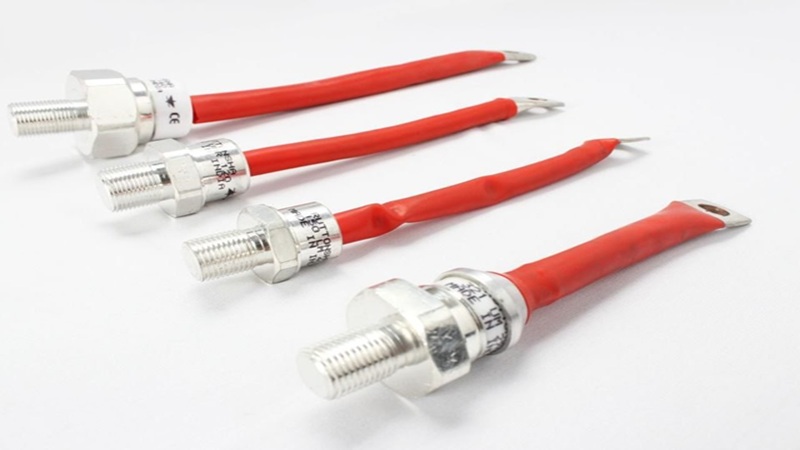Power supply reliability is an essential component of electrical and electronic system performance. Several parts, including rectifiers and protection circuits, affect the longevity and efficiency of power supplies. Standard recovery diodes are essential for reliable and steady power delivery among these parts. These diode’s durability, capacity to manage large current loads, and affordability make them popular in protection and rectification applications. Let’s discuss more about it in detail:
What are Standard Recovery Diodes?
Standard recovery diodes are rectifier diodes that efficiently convert alternating current to direct current. Unlike rapid recovery or Schottky diodes, the SRDs have a longer reverse recovery time, so they take longer to transition from conducting to non-conducting states. Their durability and capacity to withstand large surge currents make them perfect for various power supply applications.
These diodes are generally made of silicon and come in various voltage and current ratings to suit a wide range of electronic and electrical applications. An SRD’s typical reverse recovery time ranges from a few microseconds to several hundred nanoseconds and is suitable for many power supply designs when high-speed switching is not required.
Role of Standard Recovery Diodes in Power Supply Reliability
- Providing Effective Correction
Standard recovery diodes are essential to the rectifiers that power supplies use to convert AC to DC. These diodes produce a steady DC output by permitting only one direction of current flow and preventing the other way. By reducing voltage variations, this rectification procedure guarantees a consistent and reliable power supply for electronic circuits.
In high-power applications, bridge rectifiers made with conventional recovery diodes are frequently used to convert AC power to DC. These rectifiers are crucial for avoiding voltage dips and fluctuations that can impair delicate electronic component’s ability to function.
- Improving Thermal Control
Heat dissipation is an important element influencing the durability and reliability of power supply devices. Because of their great thermal efficiency, standard recovery diodes can withstand high loads without experiencing undue overheating. They are appropriate for industrial and automotive applications where the power supply must withstand challenging operating conditions due to their capacity to tolerate high junction temperatures.
Their performance is further improved by appropriate heat sinking and thermal management techniques, such as employing forced air cooling or placing diodes on heat sinks. Standard recovery diodes increase the power supply system’s reliability and durability by lowering thermal stress.
- Improving Stability and Durability Over Time
Reliability encompasses both long-term operational stability and instant performance. Because of their durable architecture, standard recovery diodes may function in high-power settings without deteriorating over time. Because of their high mean time between failures, they are a popular option for applications that need a steady and uninterrupted power supply.
These diode modules resist external elements like vibration, temperature changes, humidity, and mechanical stress. Because of this, they are perfect for applications where long-term reliability is crucial, such as industrial power supply, aeronautical systems, and automobile electronics.
Applications of Standard Recovery Diodes in Power Supplies
Standard recovery diodes are commonly utilized in power supply applications because they efficiently correct AC to DC while operating at high voltage and current levels. These diodes are very useful in circuits where switching speed is not crucial. Here are some important applications of standard recovery diodes in power supplies.
- Rectification In Linear Power Supplies
Standard recovery diodes are important in converting AC voltage to DC voltage in linear power supply. They are often employed in bridge rectifiers, which combine four diodes to give full-wave rectification. These diodes can withstand the high voltage and current demands of transformers used in power supplies.
- Circuits with Power Factor Correction
Several power supplies use standard recovery diodes in PFC circuits to increase efficiency and lower reactive power usage. Despite slower recovery periods than fast or ultrafast diodes, they are helpful in applications where switching frequencies are low.
- Circuits for Protection
Power supplies use standard recovery diodes to defend against reverse polarity and overvoltage. Clamping high voltage or obstructing improper polarity connections helps prevent damage to delicate components.
- Circuits for Charging Batteries
Standard recovery diodes in battery charger power supply control the DC output and stop reverse current flow, preventing battery discharge.
- Power Rectifiers at High Voltages
High-voltage rectifiers in commercial and industrial power supplies use typical recovery diodes. Due to their high breakdown voltage and current-handling capability, they are appropriate for high-voltage DC transmission and large-scale industrial power converters.
Read Also: Most Common Issues with Standard Recovery Diodes and How to Address Them
Bottom Line
Standard recovery diodes improve power supply reliability by assuring efficient rectification, increasing thermal management, decreasing EMI, providing surge protection, and ensuring long-term operating stability. Their capacity to handle high currents, survive voltage spikes, and function in severe environments makes them essential in various industrial, automotive, and consumer electronics applications.
Engineers may create a more durable, efficient, and reliable power conversion system by carefully selecting and including standard recovery diodes in power supply designs. This will increase the lifespan of electronic equipment and assure constant performance in essential applications.

